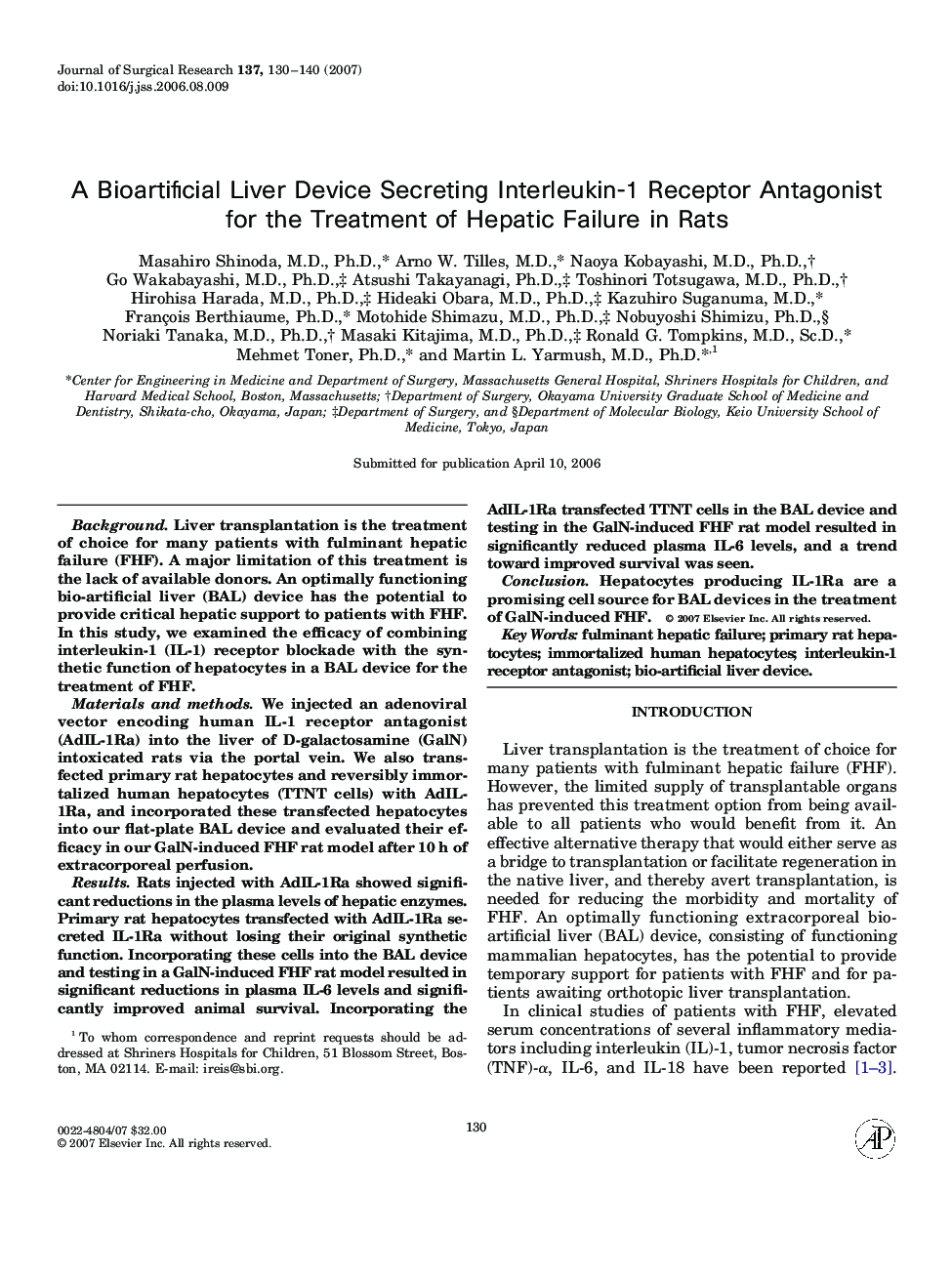| Article ID | Journal | Published Year | Pages | File Type |
|---|---|---|---|---|
| 4304826 | Journal of Surgical Research | 2007 | 11 Pages |
BackgroundLiver transplantation is the treatment of choice for many patients with fulminant hepatic failure (FHF). A major limitation of this treatment is the lack of available donors. An optimally functioning bio-artificial liver (BAL) device has the potential to provide critical hepatic support to patients with FHF. In this study, we examined the efficacy of combining interleukin-1 (IL-1) receptor blockade with the synthetic function of hepatocytes in a BAL device for the treatment of FHF.Materials and methodsWe injected an adenoviral vector encoding human IL-1 receptor antagonist (AdIL-1Ra) into the liver of D-galactosamine (GalN) intoxicated rats via the portal vein. We also transfected primary rat hepatocytes and reversibly immortalized human hepatocytes (TTNT cells) with AdIL-1Ra, and incorporated these transfected hepatocytes into our flat-plate BAL device and evaluated their efficacy in our GalN-induced FHF rat model after 10 h of extracorporeal perfusion.ResultsRats injected with AdIL-1Ra showed significant reductions in the plasma levels of hepatic enzymes. Primary rat hepatocytes transfected with AdIL-1Ra secreted IL-1Ra without losing their original synthetic function. Incorporating these cells into the BAL device and testing in a GalN-induced FHF rat model resulted in significant reductions in plasma IL-6 levels and significantly improved animal survival. Incorporating the AdIL-1Ra transfected TTNT cells in the BAL device and testing in the GalN-induced FHF rat model resulted in significantly reduced plasma IL-6 levels, and a trend toward improved survival was seen.ConclusionHepatocytes producing IL-1Ra are a promising cell source for BAL devices in the treatment of GalN-induced FHF.
